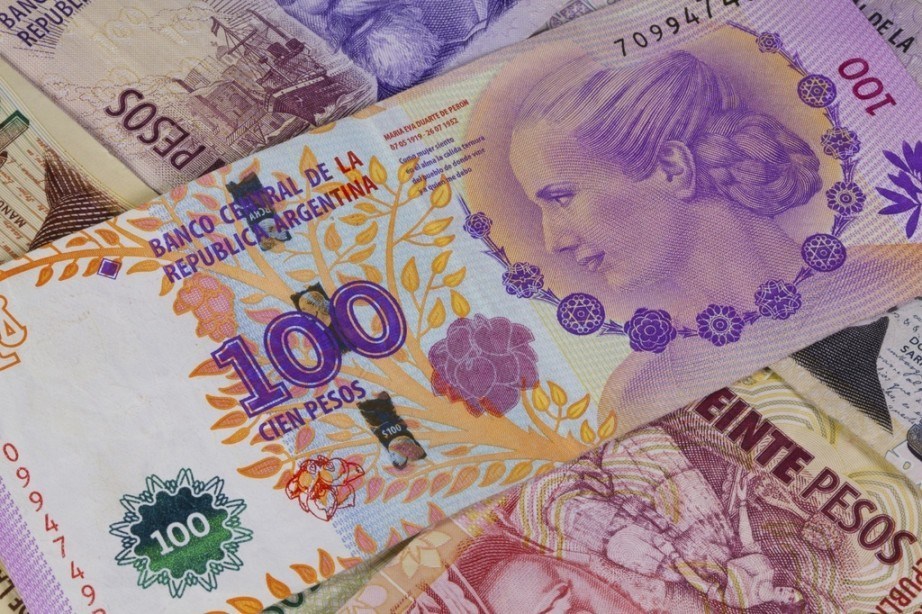This Argentine Bank Is a Cash Cow
TL;DR
Inflation is bad for people, but it’s good for interest rates, which are good for banks. In countries experiencing unfathomable inflation — like Argentina — financial institutions are raking in cash.
Think interest rates in the U.S. are bad? On May 15, Argentina’s central bank slashed its benchmark interest rate from 50% to 40%.
For context, the Federal Reserve’s benchmark interest rate stands at 5.33%.
40% may seem staggering, but Argentinians are probably feeling some relief after rates hit 126% late last year.
While the country’s ongoing struggles with inflation are a hindrance to its inhabitants … it’s been good news for Argentine banks.
Why Inflation Is Good for Financials
Inflation sucks.
It has an outsized impact on insurance rates, food costs and energy prices, seeing companies operating in those spaces excessively profiting while hurting everyday people’s budgets.
And one sector that performs particularly well during inflationary periods is financials.
Why? Two reasons:
1. Inflation drives up interest rates, meaning lenders see higher returns on repayments from borrowers.
2. Inflation also allows financial institutions to reprice products, offering more attractive rates and thereby increasing inflows for instruments like CDs and high-yield savings accounts.
So while many Argentinians struggle to afford basics like choripán — the country’s markedly better street food counterpart to America’s hot dog — investors are seeing shares of Argentine banks surge.
(And before you chastise us for disparaging America’s rendition of sausage, please understand what choripán is. Chorizo’s better than mystery meat. Chimichurri’s better than ketchup. And a baguette’s better than a white bread bun. We didn’t make the rules; we just acknowledge them.)
But we digress.
Argentina. Inflation. Interest rates. Banks.
Banco Macro
With a market cap of $5.09 billion, Banco Macro (BMA) is Argentina’s second-largest private bank, and it offers investors an incredible low risk-high reward profile.
Since being founded in 1988, it’s grown to 7,925 employees, a network of 1,772 ATMs, 957 self-service terminals and over 500 service points.
But our favorite part is that the bank is a serial acquirer:
- In 1996, it took controlling stakes in Banco Misiones (93%), Banco Salta (98%) and Banco Jujuy (100%).
- Later that year, it acquired Banco Noroeste and participated in the restructuring of four struggling private banks.
- In 2001, it purchased 60% of Banco Bansud.
- In 2002, it purchased Scotiabank Quilmes, then later purchased the remaining 40% of Banco Bansud.
- In 2004, it acquired Neuvo Banco Suquía.
- In 2005, it acquired Banco Empresario del Tucumán and Banco del Tucumán.
- In 2006, it acquired Nuevo Banco Bisel and later joined the New York Stock Exchange, becoming the first Argentine company to be listed abroad since 1997.
In early 2009, Banco Macro began a stretch of 28 quarters — or seven years — of posting consecutive net profits.
Rock-Solid Fundamentals
A brief history and a bonus food lesson are nice. But what about Banco Macro’s finances? We might be aging ourselves here, but they’re …
- Revenue for the past year is currently $3.8 trillion, up 35% from 2023’s year-end total.
- Since 2020, the bank’s total assets have increased from $1.1 trillion to $6.7 trillion … a 509% increase.
- And free cash flow — the money left over after paying for operating expenses, capital expenditures and dividends — is $3.47 billion over the past year.
Speaking of the dividend, it yields 4.8% or $2.80/share annually.
Then there’s earnings per share (EPS). Banco Macro doesn’t just beat forecasts, it obliterates them. In Q4 2023, estimates were for $2.02/share. The bank reported earnings of $8.53/share, beating by 322%. And in Q1 2024, estimates were for $2.13/share. The bank reported earnings of $4.84/share, beating by 127%.
But don’t just take our word for it …
Outlook
The Wall Street Journal’s average one-year price target for BMA is $129.36. At the high end, the Journal gives it a price target of $200.62/share. At the low end, $73.69.
The stock’s currently trading at $59.31, meaning the WSJ’s price targets represent 24.25% to 238.62% upside potential in the next year.
Zacks Investment Research calls it a “Strong Buy,” ranking it 53rd out of 250 companies in the financial sector … including American banks.
Weiss Ratings scores the stock “Excellent” for reward, “Weak” for risk, “Excellent” for growth index, “Excellent” for solvency and “Excellent” for total return potential.
Shares are up 111% in 2024 and 230% over the past year.
Always conduct your own due diligence, but if you play your cards right, you might make enough to sample some choripán on your next vacation.

